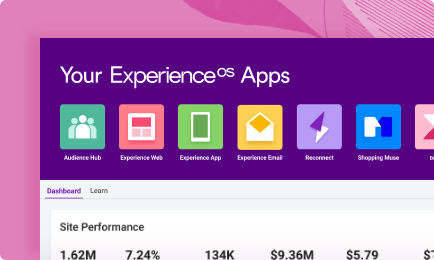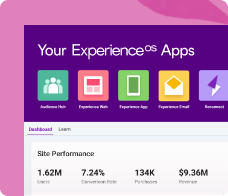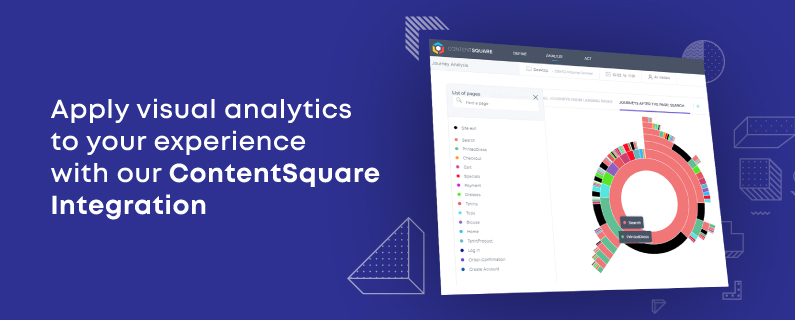Personalize with Empathy to Meet Evolving Customer Needs
Learn how Empathic Personalization provides insights into user's states of mind to measure, target, and recommend the best experience to build a deeper emotional connection
Imagine walking into your favorite store. The sales associate remembers your preferences from last time, notices your rushed body language, and quickly guides you to exactly what you need. This level of intuitive understanding has long been the gold standard of in-person retail – but what if we could bring that same emotional intelligence to digital experiences?
Consumers seek out deeper connections with brands that can infuse the empathy of an in-person interaction into their online experiences. The benefit of prioritizing empathy is undeniable, with emotional attachment contributing to 43% of business value. However, despite its clear value, emotional connections are hard to achieve as businesses struggle to turn their data into actionable marketing insights, with 80% of companies reporting that they’re collecting too much data. This results in a collection of valuable information that can’t be used effectively.
The challenge lies in connecting this data with human intuition and digital interactions. By leveraging the wealth of behavioral data at our disposal, we can transform digital signals into meaningful insights about our customers’ emotional states. This allows brands to move beyond simple reactive targeting to create experiences that truly resonate, building lasting relationships that go beyond the transaction.
Sensing and responding to evolving customer needs
Every decision a consumer makes is driven by emotion, but today, most marketers still default to traditional frameworks like CLV (customer lifetime value), RFM (recency, frequency, monetary), and the conversion funnel to define their audience strategy. While useful, these frameworks don’t encompass the entire user lifecycle or account for all behavioral data. In fact, they suffer from short-term memory, are manual, and marketers often miss parts of their user base unless multiple approaches are applied.
Given that emotion is the main purchasing driver for customers, a new audience segmentation method that could accurately identify customer emotional states was needed. Every consumer who interacts with a brand has a unique emotional state. They might be new to the brand and exploring their options, a satisfied returning customer who has previously made a purchase or fall somewhere in between.
To account for these nuances, Dynamic Yield created Empathic Personalization, a system that collects and interprets implicit and explicit behavioral signals to automatically segment users according to their state of mind. Users are segmented into Curious, Interested, Focused or Satisfied states, with more states on the horizon as we expand our empathic personalization engine further. These states account for 100% of traffic without overlap and adapt in real-time as individual behavior evolves, ensuring the entire digital experience can grow alongside each user’s developing state of mind and build a connection throughout their journey.
Marketers can also use these states as out-of-the-box targeting conditions that allow them to target any experience based on the consumer’s state of mind and deliver the most optimal digital experience that meets them exactly where they are

This visibility into emotional state allows us to measure the performance of every digital experience to uncover insights that help refine the personalization strategy. For example, this global fashion retailer discovered a major discrepancy: while nearly half of their Focused users went on to make a purchase, 75% of their Interested users failed to progress further. They realized that Interested users browsing on mobile were struggling to connect, so they implemented an auto-open product accordion for these users, resulting in a 12% increase in progression to the Focused state. They also implemented empathic-state-based product recommendations and badges, driving a substantial +45% increase in purchases for Curious and Interested segments and +110% for Focused and Satisfied segments.

Delivering Empathy with Accuracy and Automation
Once the empathic foundation is established, brands can use Empathic Recommendations to automatically serve the most optimal recommendation strategies for each user’s state of mind. Empathic Recommendations don’t merely select a single strategy – this algorithm can include multiple strategies within the same widget to truly meet the in-the-moment needs of each user. Activated automatically and continuously, this is a powerful set of strategies that ensure consumers find exactly what they need when they need it.
For example, a multi-channel home and garden retailer used Empathic Recommendations on their homepage to help Interested, Focused, and Satisfied users better find what they were looking for, which resulted in a Direct Revenue uplift of 800% and a Click Rate uplift of 69% on this webpage compared to their previous strategy.
To ensure the utmost accuracy, Empathic Personalization was built with self-learning capabilities that adapt to each brand. For example, someone browsing on a furniture website may leave and not come back for a week but still be very interested in purchasing a desk. But if it was a grocery customer who leaves and doesn’t return for even a day, they are likely no longer interested. Empathic Personalization considers these nuances and segments users according to the unique needs of each brand and its consumers.
The future of customer-conscious experiences
As AI continues to evolve, the brands that will truly stand out are those that master the use of technology to deepen human connection. Empathic Personalization isn’t just about better targeting – it’s about creating digital experiences that feel as natural and understanding as your best in-store associate. This represents a fundamental shift from transactional personalization to customer-conscious engagement, where success is measured not just in conversions, but in the depth of connections formed.
When brands understand their users’ states of mind in each moment, they can target experiences that resonate with these states, automatically adapt the experience in real-time, and measure how to move each customer along their journey to a deeper connection. The empathic approach to personalization meets consumers where they are rather than forcing them to where you want them to go, and in doing so, it creates meaningful relationships that drive not just engagement and satisfaction, but lasting loyalty and trust.















